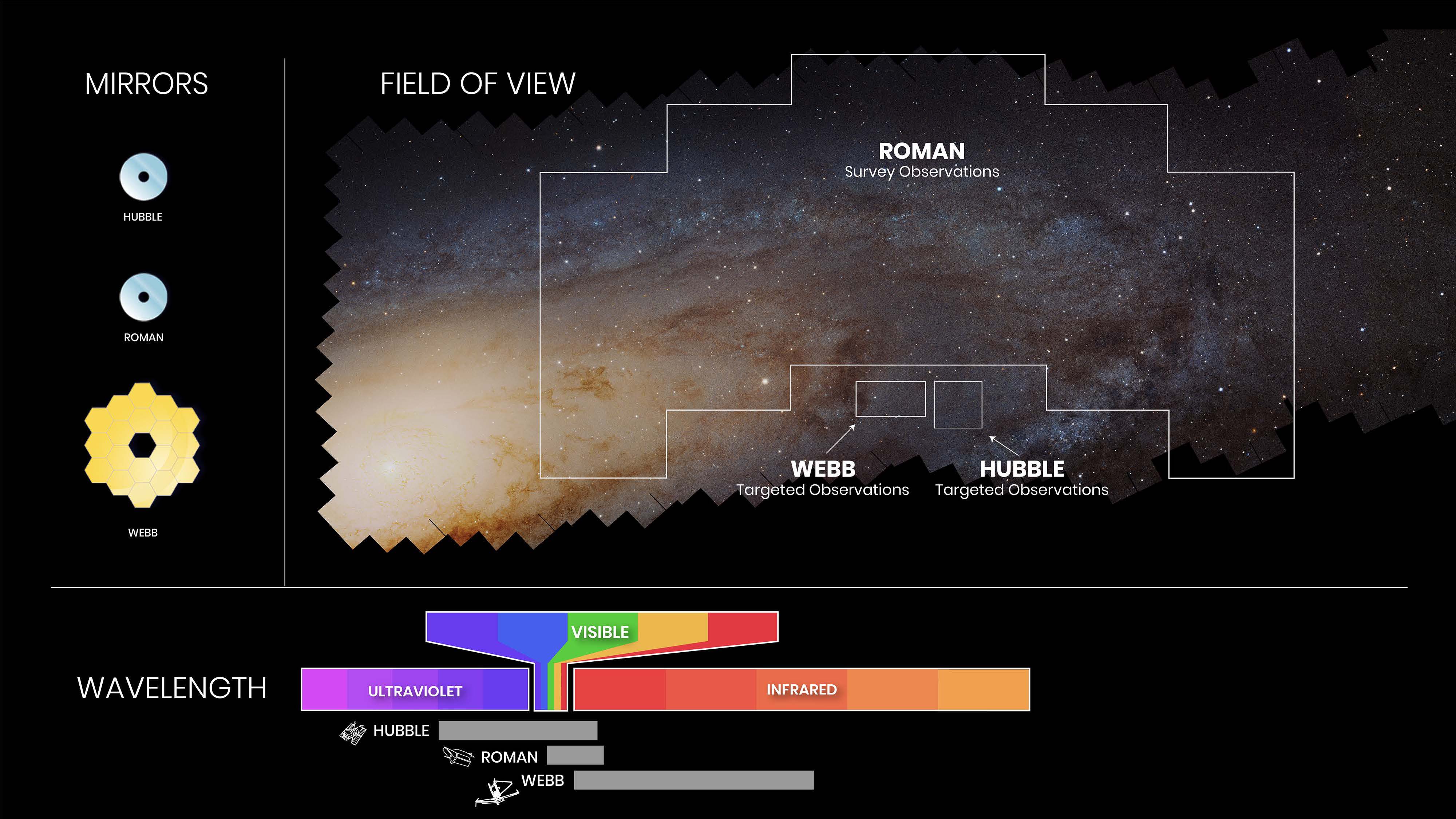Readying for Roman
Carnegie Mellon physicists among scientists laying the groundwork for the Roman Space Telescope
By Amy Pavlak Laird
Media Inquiries- Interim Director of Communications, MCS
- 412-268-9982
When NASA's Nancy Grace Roman Space Telescope launches in 2027, it will image an area of sky 100 times larger than Hubble, generating enormous, deep 3D images of the universe.
Until then, teams of scientists — including two Carnegie Mellon University physicists — are hard at work creating simulations, scouting the skies with other telescopes, preparing data analysis techniques and calibrating Roman's components. These science teams, chosen and funded by NASA, are serving a vital role.
"We're harnessing the science community at large to lay a foundation, so when we get to launch we'll be able to do powerful science right out of the gate," said Julie McEnery, Roman's senior project scientist at NASA's Goddard Space Flight Center.
Professor Rachel Mandelbaum and Associate Professor Matthew Walker, who are on the faculty in Carnegie Mellon's Department of Physics and are members of the McWilliams Center for Cosmology and Astrophysics, are serving on two of the science teams, which address different goals.

Credit: STScI
Mandelbaum is part of the team developing tools that will enable Roman's high-latitude imaging survey to achieve its extraordinary cosmological discovery potential. The survey will uncover hundreds of millions of galaxies, allowing scientists to explore why the expansion of the universe is accelerating. Current answers to this question point to dark energy, a dominant but mysterious component in the universe.
"Data from Roman and the Rubin Observatory Legacy Survey of Space and Time (LSST) can help us better answer this and other fundamental questions about the universe — if we have the right tools and methods to accurately analyze the data," Mandelbaum said. She is a leader in the field of weak gravitational lensing, a technique that measures how light rays from distant galaxies are distorted by the gravity of the visible and dark matter they pass on their way to the telescope's detector. From there, Mandelbaum said, we can learn more about the nature and amount of dark energy in the universe.
Roman's enormous view of the universe will reveal a treasure trove of data that can be analyzed for these distortions. Mandelbaum and colleagues are working to predict what galaxies Roman will see based on their current best understanding of Roman's detector and its other instruments, as well as their current best understanding of the universe. With those predictions in hand, they are running simulations and analyzing them with the goal of preparing the software infrastructure that will analyze the imaging data once the telescope launches.
"In real life it's hard to know if you got the right answer," she said. "But in a simulation, you know what the right answer is, so you can test your analysis methods. That's a lot of what we're doing right now."
Walker is working to optimize Roman's sensitivity to image faint stars and map hundreds of nearby galaxies with higher accuracy than ever before. His team, the Roman infrared nearby galaxy survey team, is focusing on how to tell a star apart from a galaxy.
"That seems easy to do, right? But when you're looking at the faint limit of what the telescope sees, we're talking about little blobs of light," Walker said.
Walker and his team want to understand how the optics of the telescope will smear out the light from what's essentially a point source of a star and how that would differ from an extended source like a galaxy. They are working with scientists at the Space Telescope Science Institute to make simulations of images based on what Roman's detectors should see. The team can then process the simulation to test their analysis tools.
Walker's team anticipates that the tools they are developing will enable scientists to efficiently plan and analyze Roman's observations of populations of stars in both crowded and dim regions of the sky.
Roman's wide field of view and ability to differentiate between stars and galaxies will be a boon to Walker's research, he said. He is looking for wide binary stars, which are pairs of stars that orbit each other. But because they are far away, telescopes see the two stars as just one block, so identifying true wide binary stars is difficult. Walker said he expects that Roman's crisp images will allow the two stars to be distinguished. Finding binary stars in a nearby galaxy may upend a current theory explaining in what form dark matter exists.
Over the past five years, Mandelbaum and Walker have worked on other Roman science investigation teams. Before, they were involved in deciding how to optimize Roman's instruments and what the telescope's capabilities should be. Now it's more about building tools to interpret the data, Walker said.
The two have been involved with other large telescope projects, including the upcoming Legacy Survey of Space and Time (LSST), which will be carried out by the Vera C. Rubin Observatory, and NASA's James Webb Space Telescope. They are excited for their students to get a taste of that experience with Roman.
"This is an exciting opportunity for students and postdocs who are interested in cosmology to directly do the crucial work that's needed to get the science out of a new, space-based telescope," Mandelbaum said. She said she's feeling the excitement too. "It's been 14 years of looking forward to and dreaming about this telescope, and so it's very exciting to be just a few years away from launch."
The Nancy Grace Roman Space Telescope is managed at NASA's Goddard Space Flight Center in Greenbelt, Maryland, with participation by NASA's Jet Propulsion Laboratory and Caltech/IPAC in Southern California, the Space Telescope Science Institute in Baltimore, and a science team comprising scientists from various research institutions. Mandelbaum's team is led by Olivier Doré at the Jet Propulsion Laboratory, and Walker's team is led by Benjamin Williams at the University of Washington in Seattle.